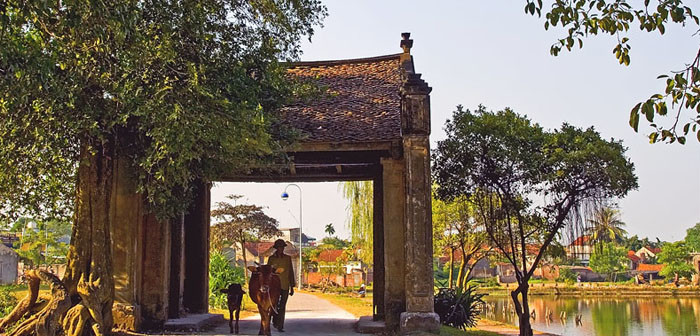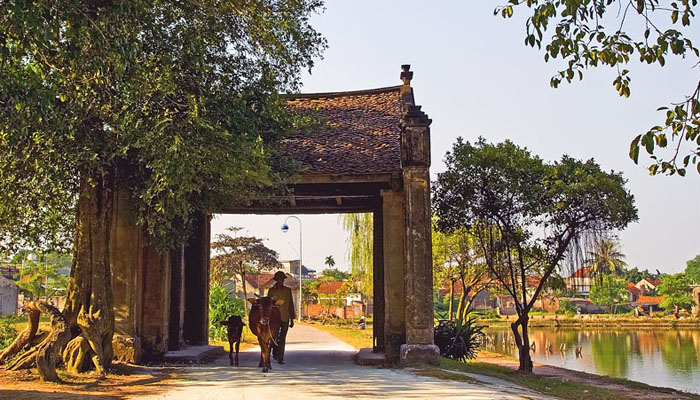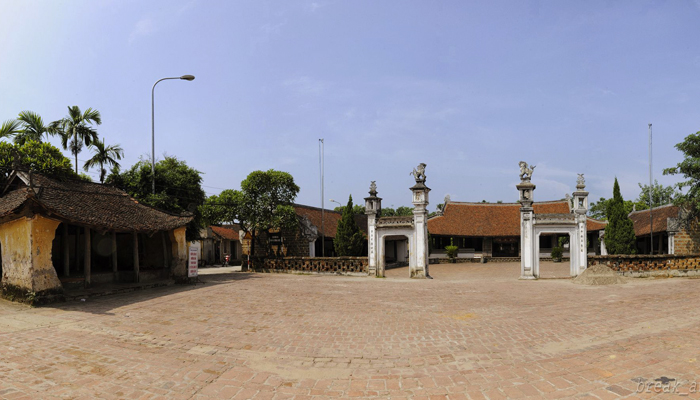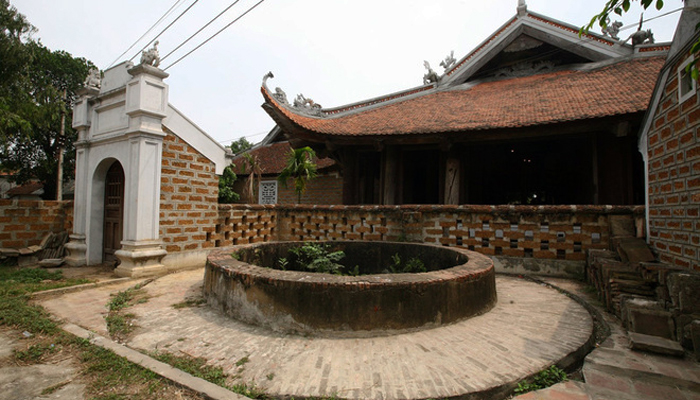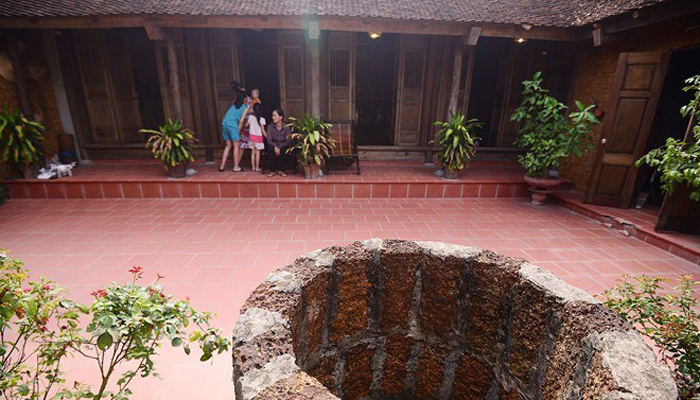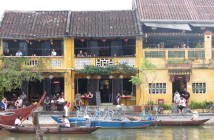Beautifully nestled in Son Tay Town, Hanoi, Duong Lam is the first ancient village in Vietnam and has long been the must-see of the region. This ancient village is not only well known for being the home of Kings as two of Vietnam’s Kings, Phung Hung (761-802) and Ngo Quyen (896-944) were born here, but it also fames for the system of old houses with distinctive features. This 1.200 year old ancient village boasts a number houses dating back up to 400 years. The first thing that captures the attention of tourists is that most of traditional houses are built from blocks of laterite and mud which are abundant in this region,
Like many other ancient villages in Vietnam, Duong Lam demonstrates all the basic features including port village, trees, courtyard, temples, well, water fields. Fishbones-shaped roads and second-to-none features of the old village in Mong Phu Village set Duong Lam apart from other neighboring villages. Beside its historical and tourism values, Duong Lam is well worth a place for tourists to gain insights into resident communities in ancient agriculture. The blend combination of the village gate, banyan, well, communal house makes Duong Lam a hot spot and has become the defining factor of this ancient village.
Communal House
The communal house is the place where the locals worship the founder of the village. Duong Lam has 5 communal houses as this villages consists 5 smaller villages. Of 5 communal houses Doai Giap and Cam Lam communal houses were built to worship Phung Hung; both the founder of the village and great mandarin Cao Phuc Dien – the hero under Le Dynasty were dedicated to Cam Thinh communal house. Dong Sang communal house, the worshipping place of the God, was destroyed by fire and was rebuilt by the money collected from people. The god Tan Vien Son was dedicated in Mong Phu communal house. Recently, Mong Phu communal house has become the place where the villagers gather and cultural activities are performed. The communal houses have specialized by sophisticatedly carved details in the form of flowers, leaves, clouds.
Old Wells
Unlike wells in other villages, 4 centuries old well in Duong Lam boasts its distinctive feature due to hard underground rocks.
Hardly any villages have as many wells as Duong Lam. The public well was placed in every hamlet in Duong Lam village, so that the locals could conveniently take the water and bring water to their home.
Apart from the use value, wells also demonstrate spiritual values. For example, two wells which nestle beside the Mong Phu communal houses, symbolizes the sacred eyes of the dragon of the village.
Over the years, the living standard of the locals has been improved significantly, the ancient wells has been gradually replaced by piped water. The hundreds-year-old wells became abandoned and were covered with weeds. So far, the common well has been well preserved as it retains many imprints of the villagers.
Architecture of the Houses
A system of ancient houses built of laterite, an available material dug up from the ground, gives Duong Lam prestige. Here all the houses were built of laterite; the gate of the village, porch, fences, wells were often built of laterite.
The layout of the campus architecture is a form of the connection between the main house and outbuildings, generally rectangular-styled structure.
In the campus, the main house is the largest category as it is where family members live and worship their ancestors. Generally, three or four generations live together under one roof.
There are a number of houses dating back from 18th and 19th century. In general, the structure of these houses greatly varies from one to two, three, four, five rows of column. These wooden houses mainly have 5 or 7 spans with 2 wings.
The old houses is bounded by village roads, winding alleys in line with line frown flickers, lush perennial gardens, banyan tree, the gates of village, wells, which make this village ancient and taciturn.


